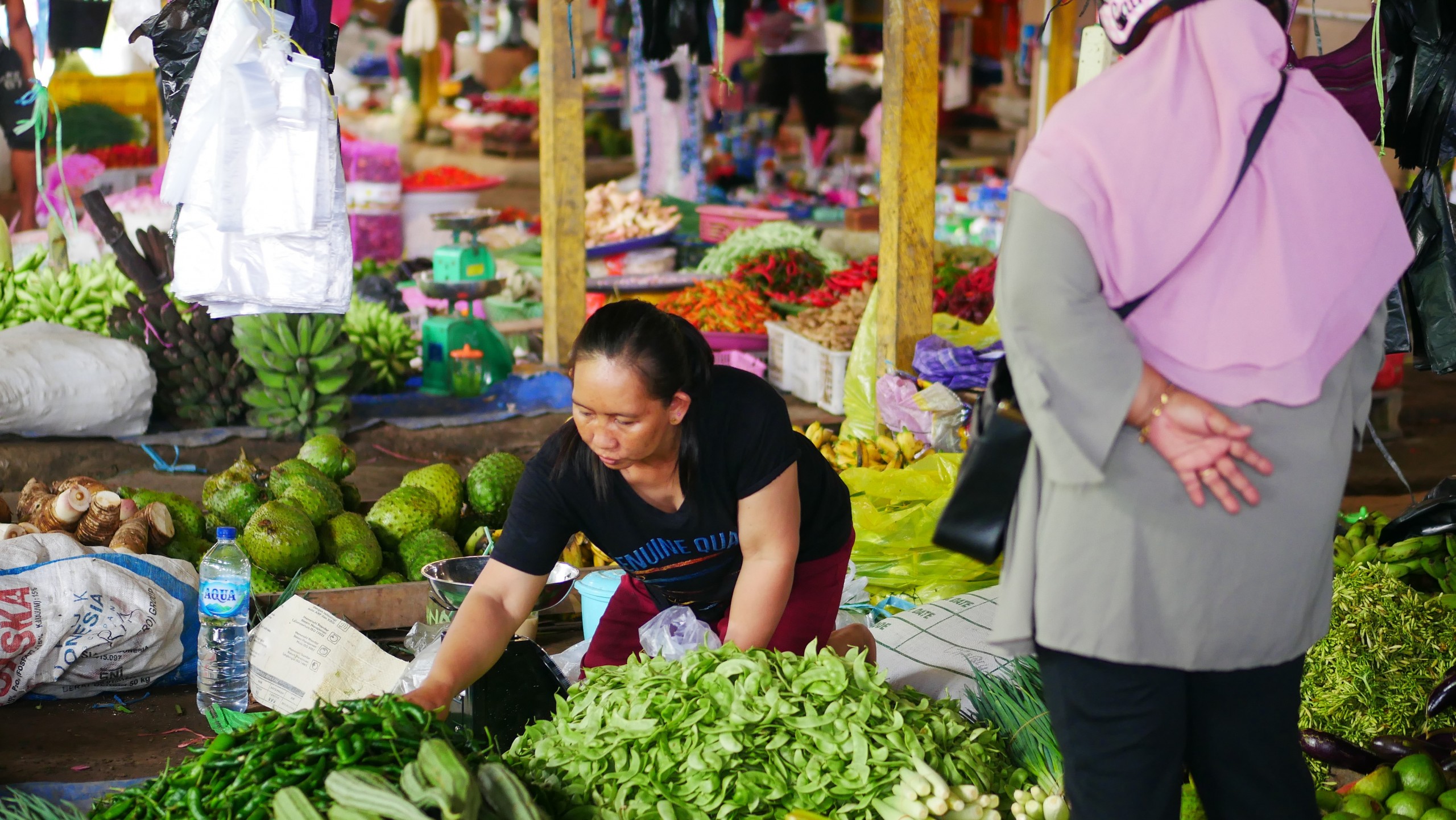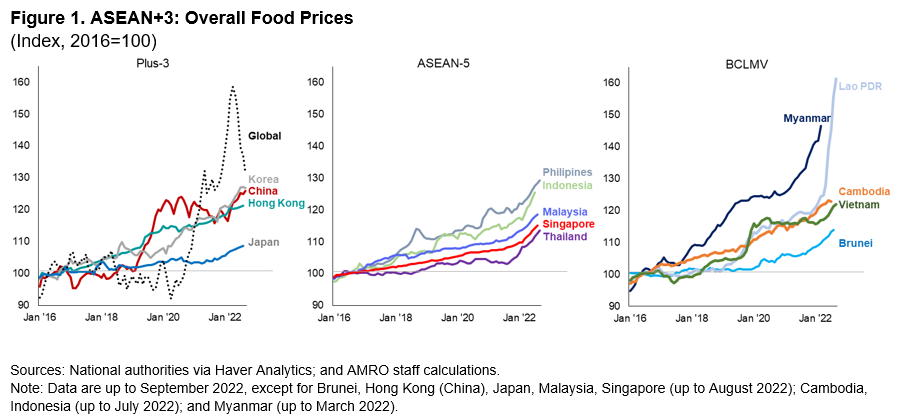This article was first published as an op-ed in The Edge Markets on October 25, 2022

Image: Joko P / Shutterstock.com
Food prices have soared to record highs around the world
Food prices started to increase in many countries in the latter part of 2020 as COVID-19 restrictions disrupted agricultural production and food supply chains, while stockpiling of groceries pushed up demand. Across the world, food production from planting to distribution was constricted by labor shortages and processing plant shutdowns.
In the latter half of 2020, the disruption in food supply was compounded by strong global demand as the world emerged from COVID-19 lockdowns (Figure 1). The lifting of restrictions enabled social activities, such as dining out, to resume, in places like the United States and Europe.
When the war in Ukraine broke out in early 2022, it set off a series of direct and indirect supply shocks to commodity markets, pushing food prices up even further. Countries that used to import wheat and corn from Ukraine for food or animal feed were no longer able to do so.
Russia is a major global exporter of fertilizers and its decision to extend export quotas on fertilizers through the end of this year means that prices will continue to stay high. As fertilizers are essential inputs for boosting agricultural productivity, food prices will remain elevated into the next season.
The war, and ensuing sanctions imposed on and by Russia, also had knock-on effects on energy prices and global shipping, amplifying the pandemic-induced supply chain disruptions.
To make matters worse, export bans by some agricultural producers reduced the global supply of commodities such as wheat and oilseeds and intensified raw food scarcity. Perennial risks to agricultural output such as extreme weather and livestock diseases also affected global food supply in the past two years.

ASEAN+3 economies are experiencing rising inflation
In some ASEAN+3 economies, policies such as export restrictions and price stabilization measures have helped to temper the effects of rising food prices on domestic headline inflation. Indonesia, Malaysia, Thailand, and Vietnam, for instance, still rely on administrative controls to regulate the prices of key essential goods, such as cooking oil, flour, and sugar.
However, economies with higher food import dependence and a greater weight of food items in the overall household consumption basket, have seen headline inflation accelerate faster.
In the Philippines, which imports much of its food, headline inflation in the first three quarters of 2022 trended upwards to 5 percent year-on-year. In Lao PDR and Myanmar, headline inflation likewise surged to multi-year highs due mainly to soaring prices for imported food. The large depreciation of their currencies has also pushed prices up.
Still, aggregate headline inflation in ASEAN+3 is the lowest compared to other regions in the world.
Policymakers must be vigilant and ready to act
Food price inflation has triggered concerns in the region over broader price stability and social equity, prompting monetary and fiscal policies to respond.
An extended period of high inflation can cause inflation expectations to become unanchored, leading to the high inflation becoming entrenched. This occurs when consumers, businesses, and investors expect inflation to keep going up, causing wages and prices to increase in tandem. Such a situation would require monetary policy to respond more aggressively to inflationary supply shocks such as food price increases through larger policy rate hikes to tamp down demand than would have been the case otherwise. Therefore, the region’s monetary policymakers need to keep a close eye on inflation expectations and ensure that they remain well anchored, particularly in economies where headline inflation has exceeded the inflation target range for several months.
Food price inflation hits the poor harder than the rich. Fiscal policy should provide targeted assistance to low-income households, for example in the form of temporary cash transfers or subsidies, to help them cope with the rising prices. Efforts to clamp down on hoarding should continue. In the longer term, policies to support domestic production and improve food distribution efficiency could go a long way to build resilience to future food supply shocks.
Such measures would help prevent inflation from worsening, providing some comfort that future trips to the grocery store could stop being so painful on our wallets.
